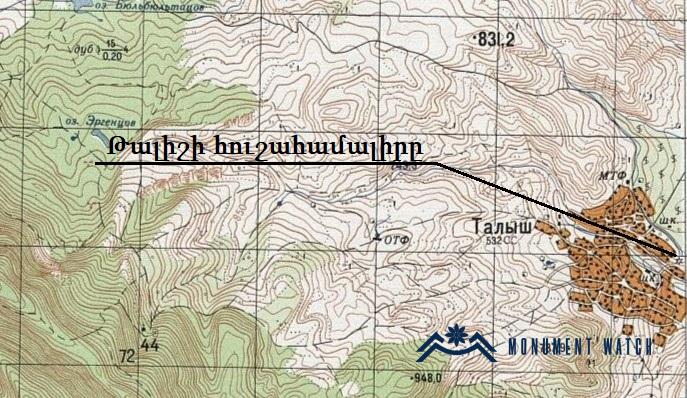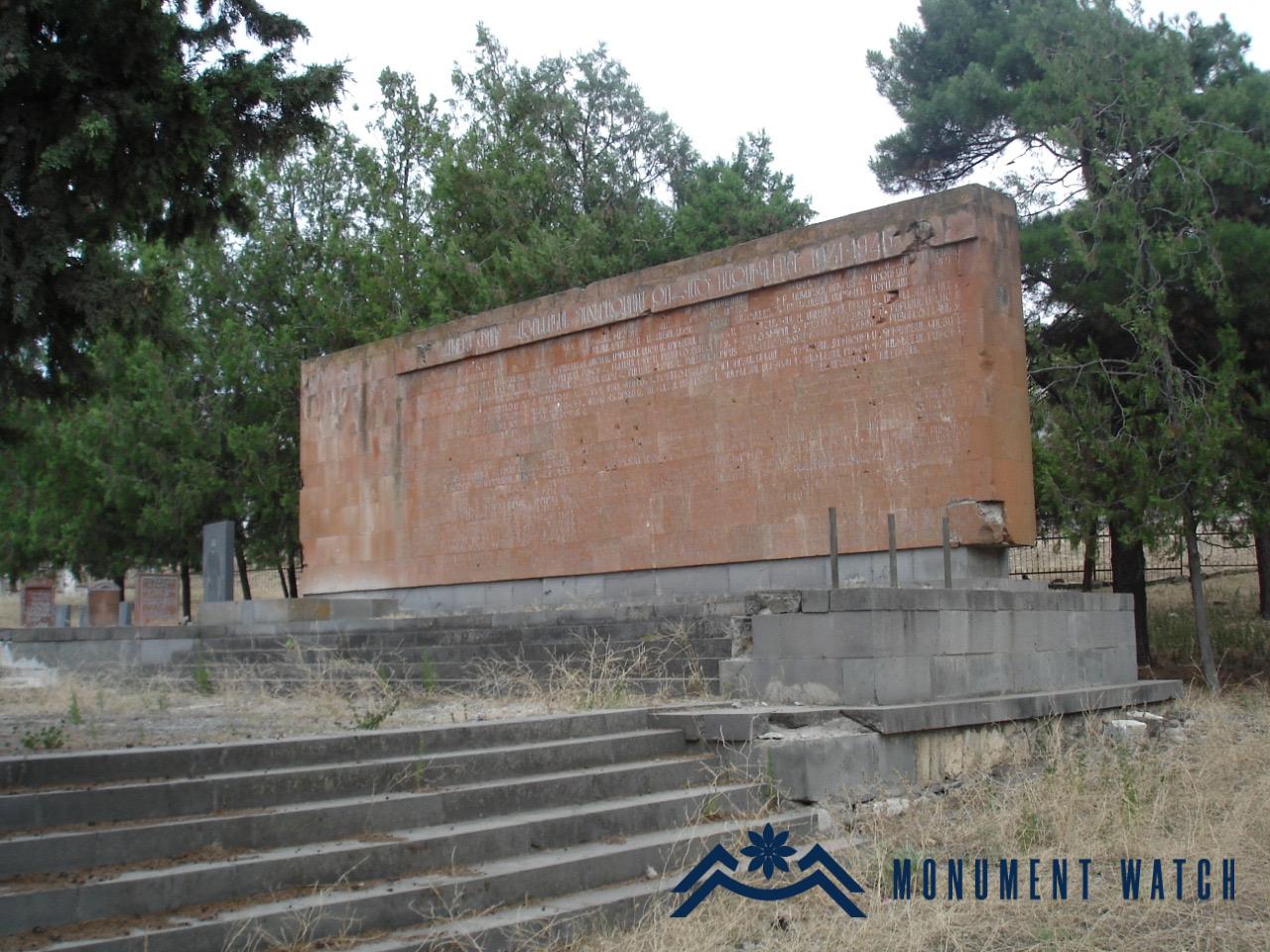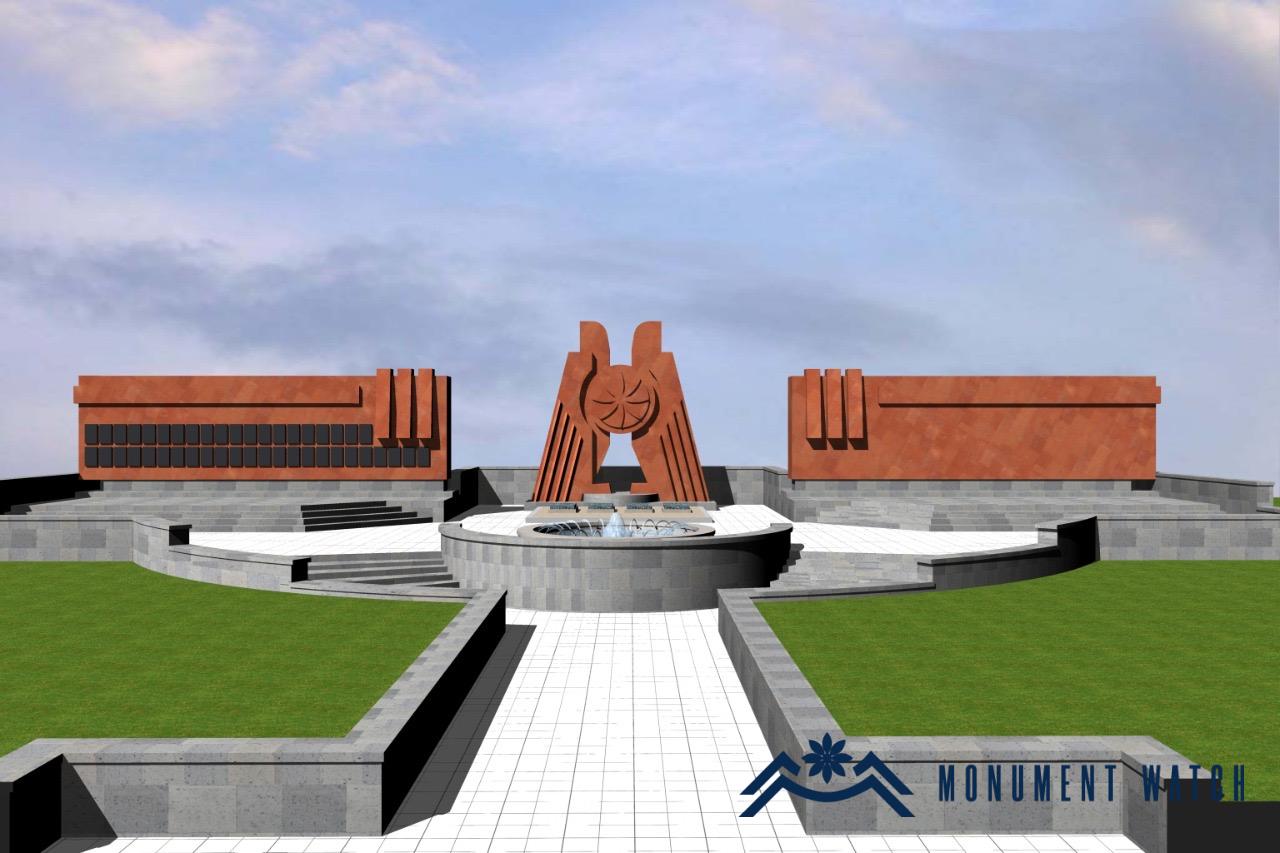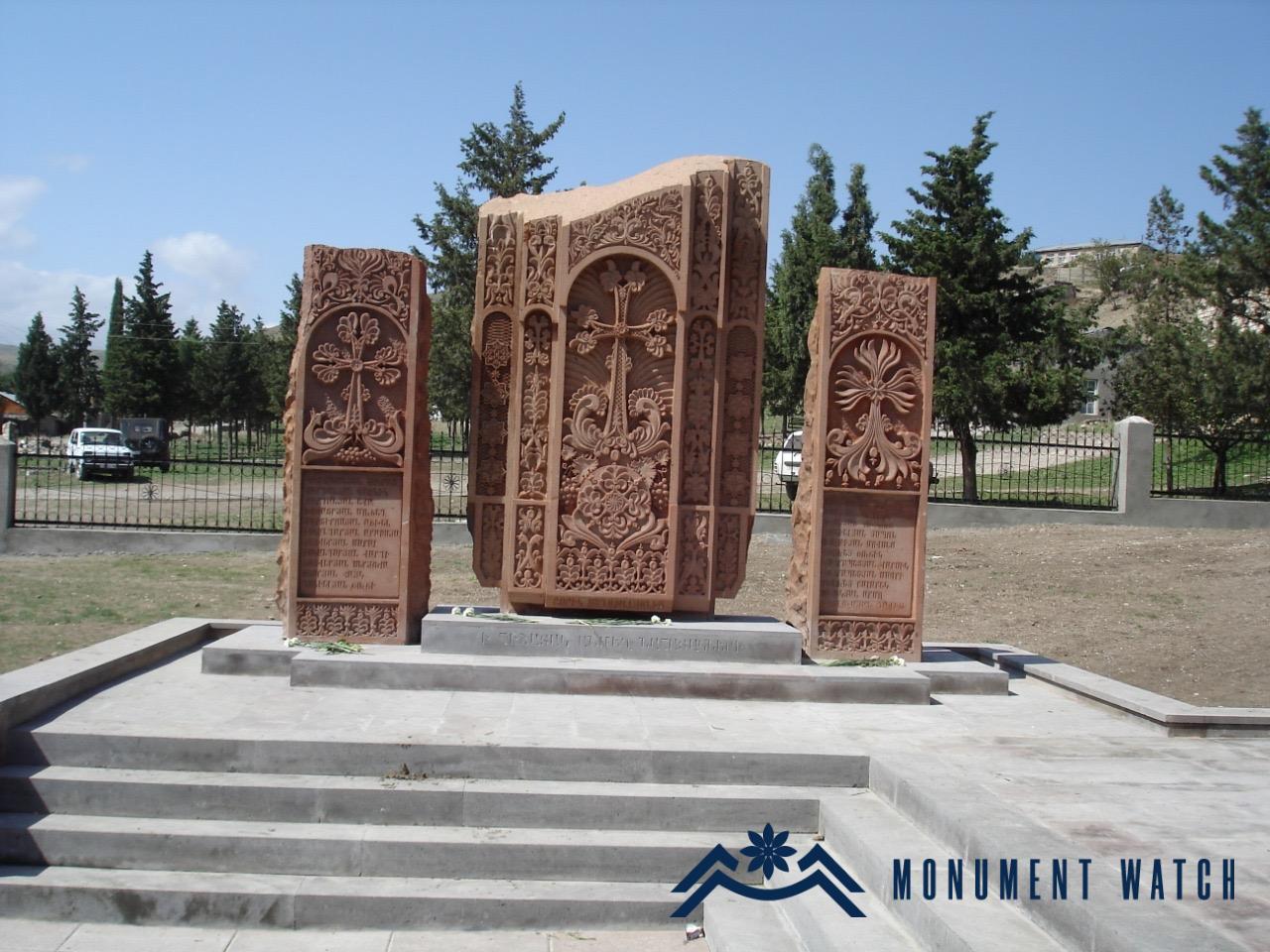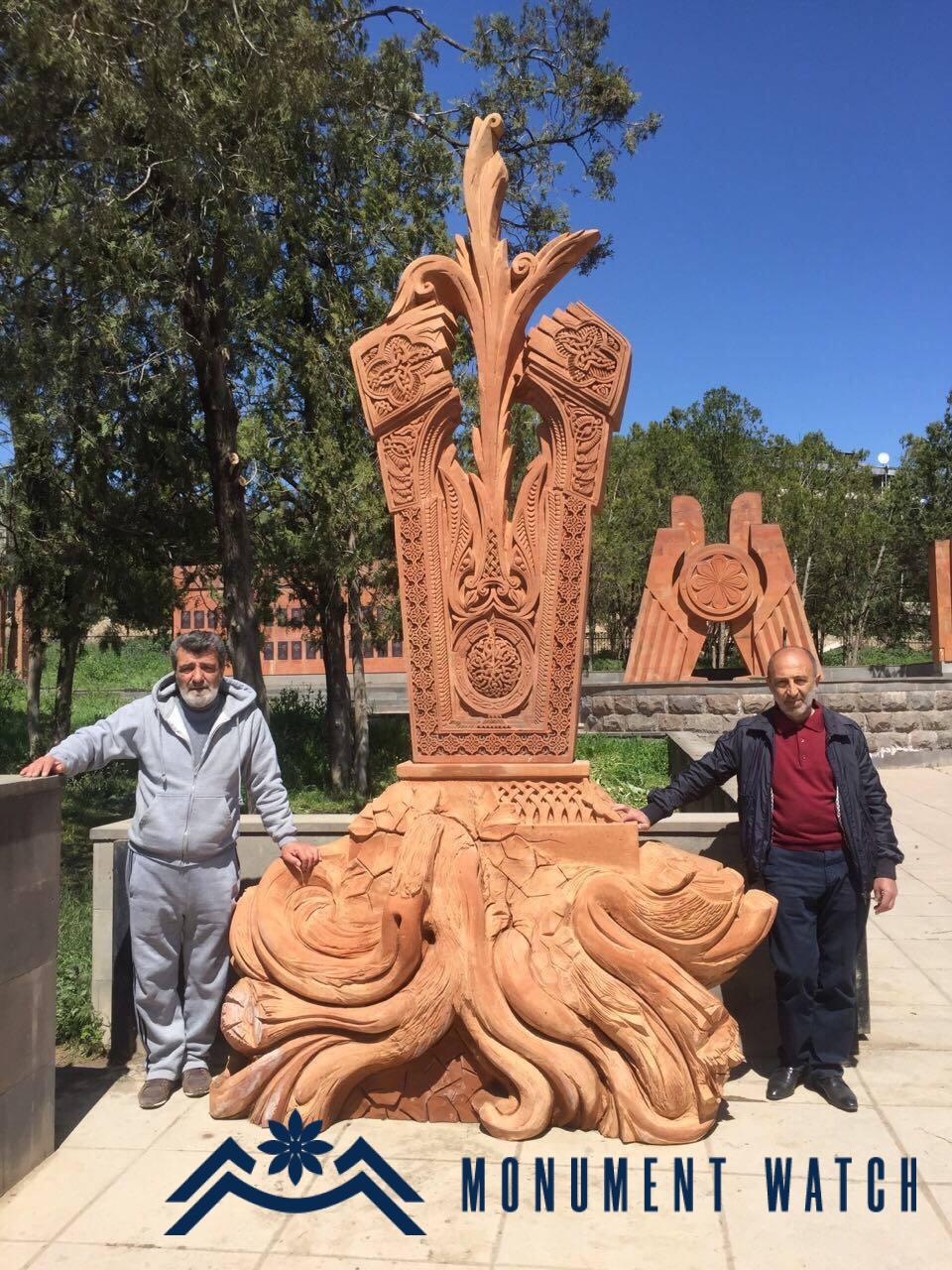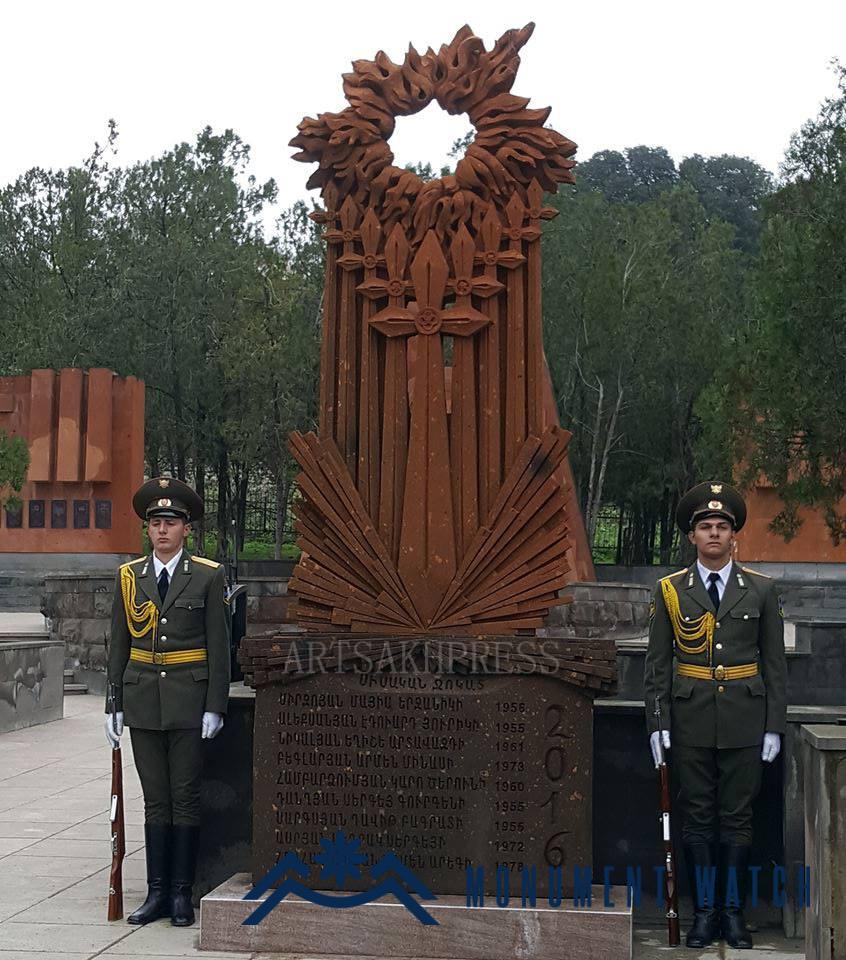The Talish Memorial
Historical overview
The Talish Memorial Complex, built as an extension of the 1968 memorial dedicated to the victims of the Patriotic War, originally featured a soldier's sculpture and a memorial wall (Balayan 2020, 291). In 1992, during Azerbaijani rule, the soldier's statue was destroyed by a tank, leaving only the memorial wall intact (Fig. 3).
After Talish was liberated, four freedom fighters were buried beside the memorial wall. Philanthropist Boris Saghatelyan, born in Talish, later funded additional monuments dedicated to the victims of the Liberation War. These additions included eagle sculptures, a memorial wall with pictures of the victims, and khachkars. Construction began in 2007, and the memorial complex was officially opened on September 5, 2009 (Fig. 4).
Architectural-compositional examination
The memorial complex consists of three parts: eagle sculptures, memorial walls, and khachkars. These elements face each other in the center and are separated by a shield. The memorial complex measures 48 meters in length and 38 meters in width, according to the information database of NKR monuments (Fig. 5). On the wall to the left of the statues (which existed before the construction of the memorial), the names of Talish residents who perished in the Patriotic War are engraved. On the right side, the wall features pictures and names of Talish residents who perished in the Liberation War. To the left, there is a group of khachkars bearing the names of 24 victims who were killed during the deportation of Talish residents in 1992 (Fig. 6). The entire memorial is lined with tuff tiles.
Following the Four-Day War, in 2017, Ashot Minasyan, the commander of Sisian's detachment, spearheaded and funded an initiative to further enhance the memorial complex. Two cross-stone monuments were erected on either side of the entrance, symbolizing different aspects of Talish's history. One commemorated the victims of the Four-Day War, while the other celebrated the "rebirth" of Talish (crafted by the esteemed cross-stone master Varazdat Hambardzumyan, figs. 7 and 8). With the installation of the "Revival" monument, the memorial complex was renamed "Restored Talish," symbolizing the community's resilience and restoration.
The condition before and after the war
After the Azerbaijani occupation in 2020, the memorial complex suffered extensive damage and was ultimately razed to the ground (for details, see the https://monumentwatch.org/en/alerts/destruction-of-the-revived-talish-monument/).
Bibliography
- Balayan 2020 - Balayan V., Outlines of the History of Settlements of the Republic of Artsakh, Yerevan.
The Talish Memorial
Artsakh
